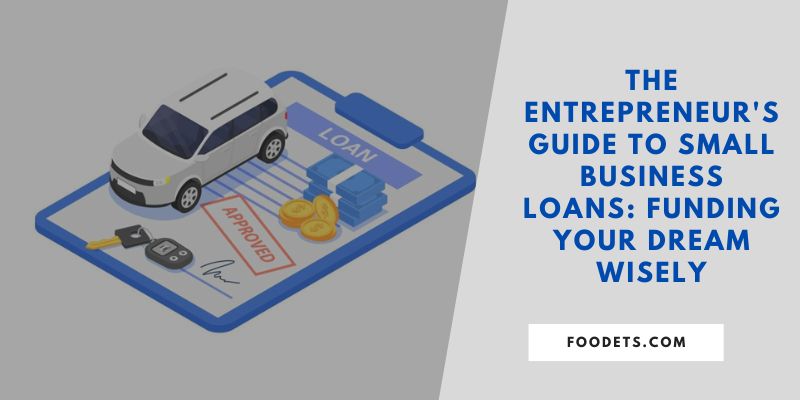Starting or growing a business is tough. If you’ve tried getting a loan, you know it can be confusing. My friend Sarah had a dream. She wanted to open a bakery. She had great recipes. People loved her treats. But she needed money for a kitchen. A small business loan helped her. She got the space she needed. Now, her bakery is a huge success.
If you’re in the same spot, this guide is for you. I’ll break down small business loans, how to get approved, and where to find the best deals. Let’s get started.

What Is a Small Business Loan?
A small business loan gives you money to start or grow your business. You borrow cash and agree to pay it back, usually with interest. Businesses use loans for many reasons. You might need money for new equipment, rent, inventory, or hiring staff. Before you apply, it’s important to understand your options.
Types of Small Business Loans
Not all loans are the same. Here are the most common ones:
1. Term Loans
You get a lump sum and repay it over time. It’s great for big expenses like renovations or buying equipment.
- Best for: Business expansion, equipment purchases.
- Pros: Fixed payments, predictable interest rates.
- Cons: Requires good credit, may need collateral.
2. SBA Loans
The U.S. Small Business Administration backs these loans. They have low interest rates and long repayment terms.
- Best for: Startups, businesses needing long-term funding.
- Pros: Low interest, flexible terms.
- Cons: Long application process, strict rules.
3. Business Line of Credit
This works like a credit card. You borrow what you need and pay interest only on what you use.
- Best for: Managing cash flow, covering seasonal expenses.
- Pros: Flexible borrowing, pay only for what you use.
- Cons: Higher interest rates than term loans.
4. Invoice Financing
If customers take a long time to pay, this loan helps. You borrow against unpaid invoices to keep cash flowing.
- Best for: Businesses with slow-paying clients.
- Pros: Quick cash, no need for collateral.
- Cons: High fees reduce your profit.
5. Equipment Loans
Need a truck or machine? This loan helps you buy equipment. The equipment itself serves as collateral.
- Best for: Businesses needing expensive tools.
- Pros: Easier approval, fixed payments.
- Cons: Only for equipment purchases.
6. Merchant Cash Advance (MCA)
This isn’t a loan but an advance on future sales. You repay it with daily credit card sales.
- Best for: Businesses with strong credit card sales.
- Pros: Fast cash, easy approval.
- Cons: High fees, costly in the long run.
How to Get Approved
Lenders want to make sure you can pay back the loan. Here’s how to improve your chances:
1. Build Your Business Credit
Your business credit score matters. Improve it by:
- Paying bills on time.
- Reducing outstanding debt.
- Working with vendors that report to credit bureaus.
2. Prepare Your Documents
Lenders will ask for:
- Tax returns.
- Bank statements.
- Profit-and-loss reports.
- A business plan.
3. Choose the Right Loan
Pick the loan that fits your needs. If you need money fast, an SBA loan might not work. If you qualify for a term loan, avoid expensive options like MCAs.
4. Show Strong Cash Flow
Lenders want to see that you can make payments. Keep your financials in order. If your income is unstable, consider a business line of credit.
5. Offer Collateral
Some loans require collateral, like equipment or property. Be ready to put assets on the line if needed.
Where to Get a Loan
Different lenders offer different benefits. Here’s what to expect:
1. Banks
- Best for businesses with good credit.
- Low interest, but strict rules and slow approvals.
2. Credit Unions
- Easier to qualify than banks.
- May require membership.
3. Online Lenders
- Fast approval, simple applications.
- Higher interest than banks.
4. SBA Lenders
- Government-backed, low rates.
- Best for businesses that qualify.
5. Alternative Lenders
- Quick cash, but expensive.
- Use only as a last resort.
Mistakes to Avoid
Many business owners make mistakes when borrowing money. Here’s what not to do:
1. Borrowing Too Much
More money means bigger payments. Only take what you need.
2. Ignoring Fees
Some loans come with hidden charges. Read the fine print.
3. No Repayment Plan
Never take a loan without a clear plan to pay it back.
4. Not Comparing Offers
Shop around. Don’t take the first loan you find.
Loan Repayment Strategies
Once you get a loan, make sure you repay it wisely. Here’s how:
- Create a budget: Include loan payments in your monthly plan.
- Set aside emergency funds: Prepare for slow months.
- Pay more than the minimum: If possible, pay extra to save on interest.
Final Thoughts
A small business loan can help you grow—if used wisely. Whether you’re launching, expanding, or managing cash flow, pick the right loan and lender. Do your research and borrow responsibly.
Remember Sarah’s bakery? She paid off her loan and is now planning to open a second location. With the right funding, your business can succeed, too!
Still not sure which loan to choose? Let’s talk in the comments!